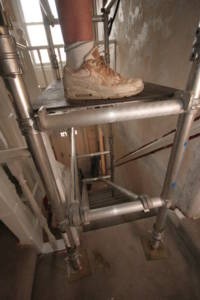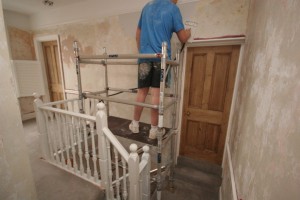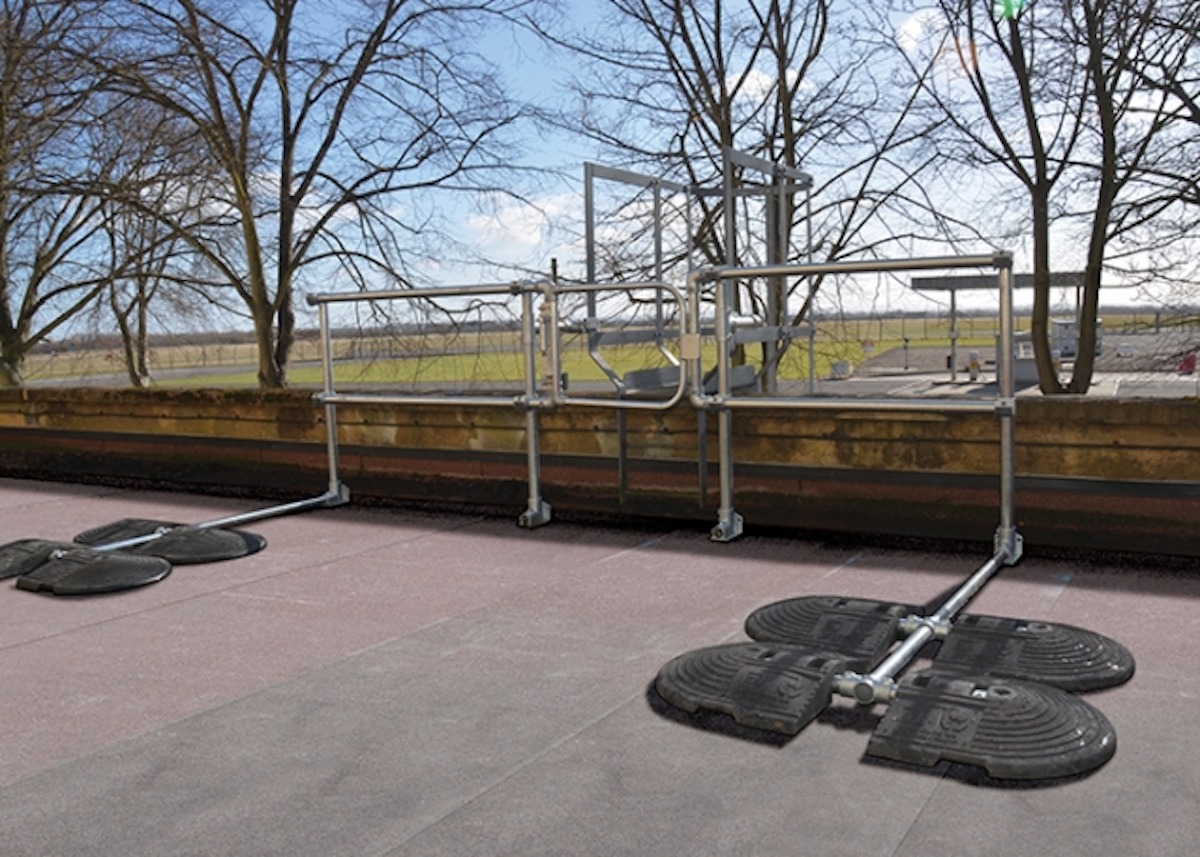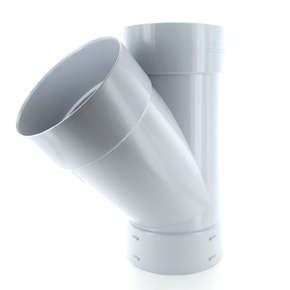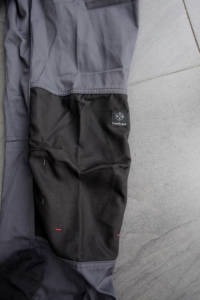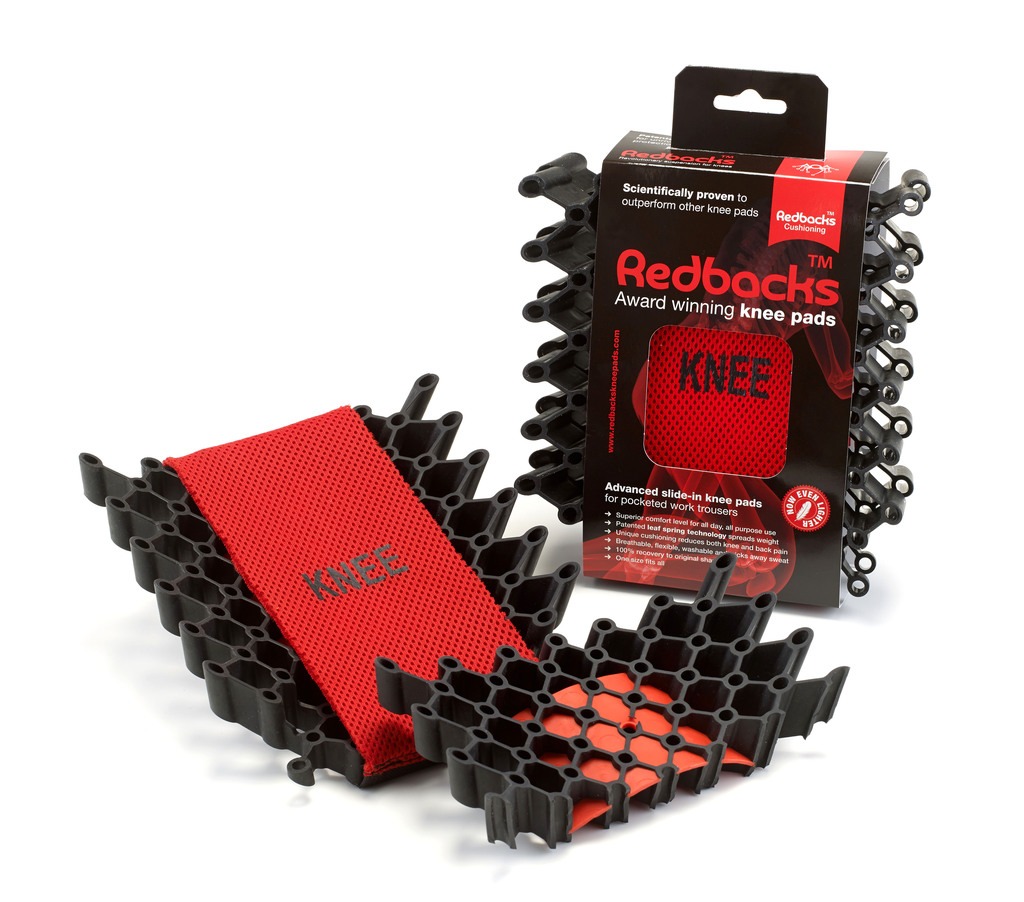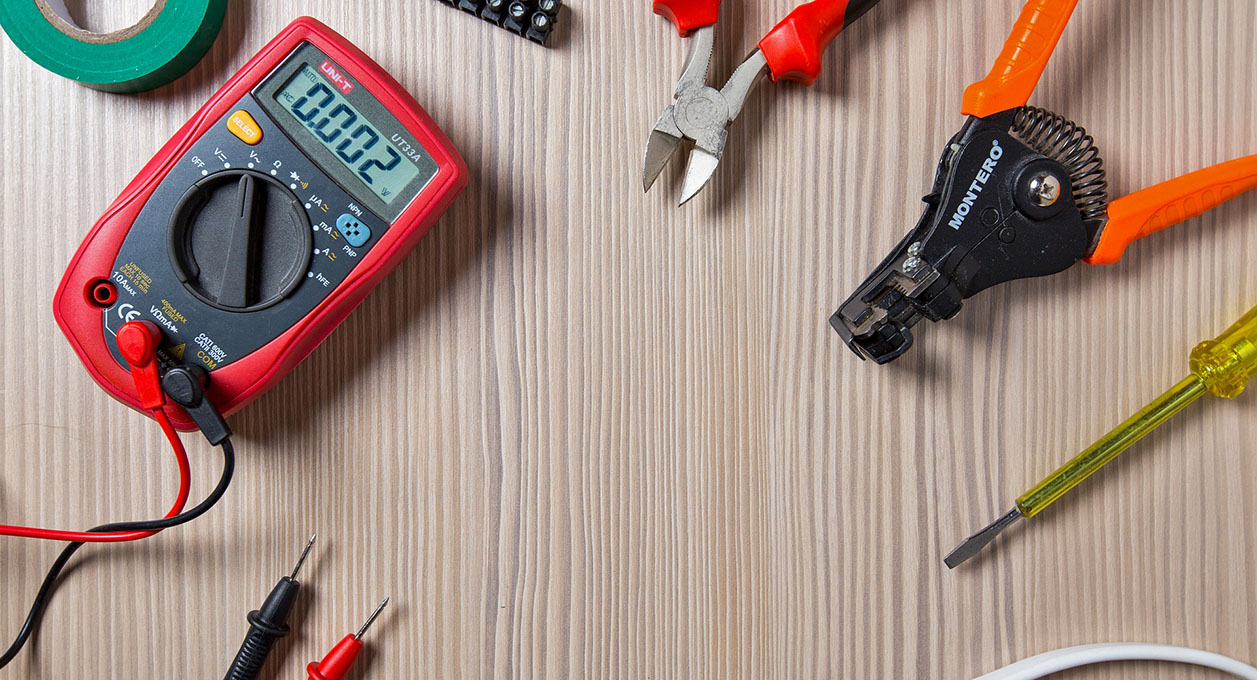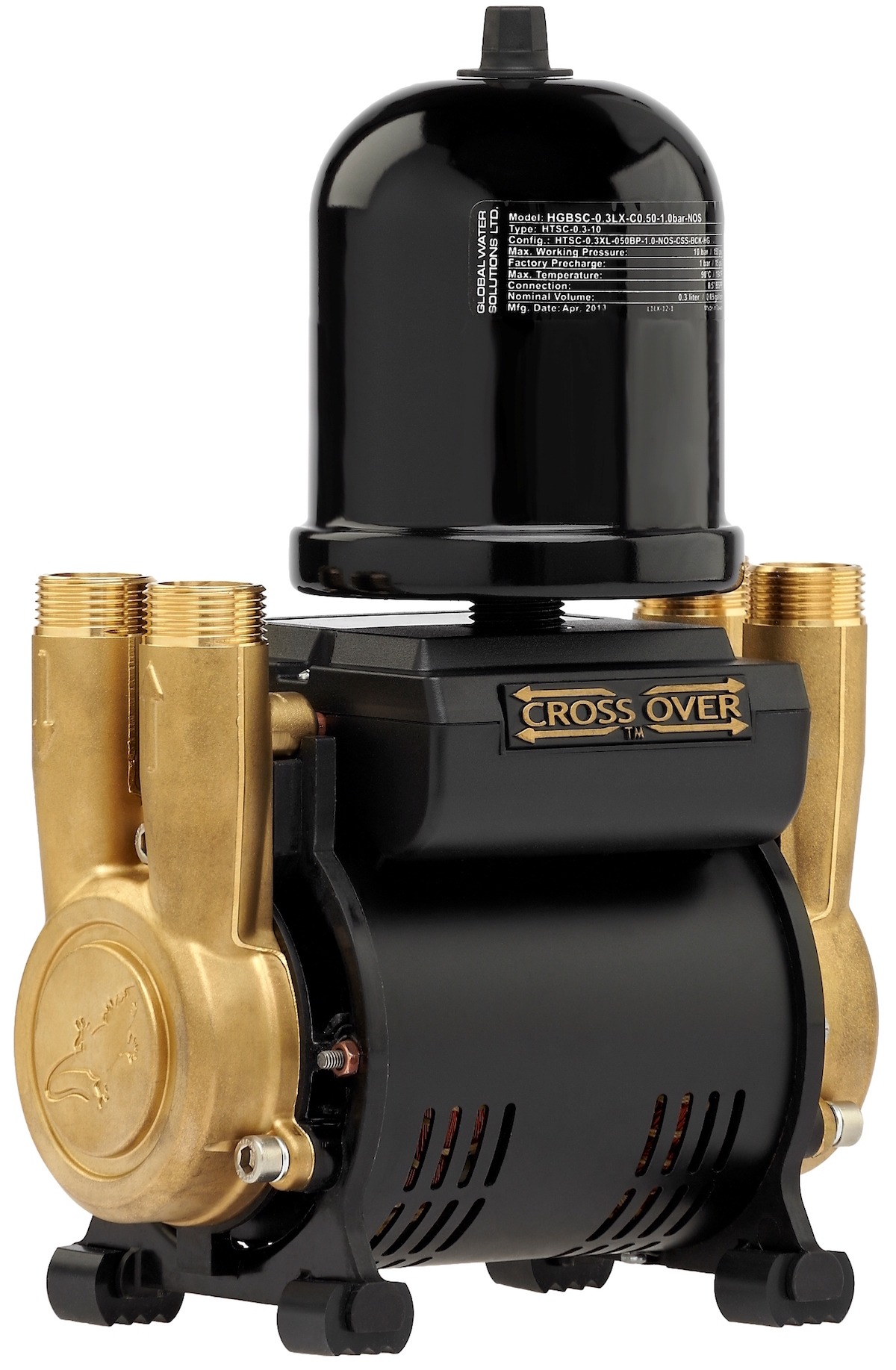Product review: GPR steps and Stair-scaffold
New Toyota Hilux debuts at Geneva motor show
Toyota has introduced its new Hilux at this year’s Geneva Motor show. Available in Single, Extra and Double Cab body styles, the eighth generation Hilux offers a new and stronger ladder chassis, reinforced deck structure, enhanced 4×4 capabilities and an improved towing capacity.
New 2.4-litre D-4D engine
The introduction of a 2.4-litre D-4D Global Diesel (GD) engine featuring Stop/Start combines improved torque delivery in the low and medium speed ranges with improved fuel economy. The 16 valve, DOHC four-cylinder engine is equipped with a variable nozzle turbocharger with intercooler. The 2393cc unit generates 148bhp @ at 3,400rpm, and maximum torque of 400 Nm between 1,600 and 2,000 rpm.
Two-wheel drive Hilux versions are equipped with six-speed manual transmissions, whilst all-wheel drive models offer a choice of six-speed manual or automatic gearboxes. Both transmissions have been revised to improve durability, enhance low-speed driving performance and offer drivers quieter, smoother gear changes whilst realising the full potential of the new engine. All versions achieve a top speed of 170 km/h and accelerate from 0 to 100 km/h in 12.8 (6A/T) or 13.2 (6M/T) seconds. The new 2.4-litre D-4D returns an average fuel consumption and CO2 emissions as low as 39.8mpg and 187 g/km.
Driving dynamics & off-road ability
The all-new Hilux features a new ladder-frame chassis offering a 20 per cent increase in torsional rigidity. It is designed to combine improved handling, ride comfort, noise and vibration performance and collision safety and durability.
The tough, durable leaf spring and twin shock absorber rear suspension system has been revised to combine the off-road articulation capabilities with SUV-like ride comfort and handling stability. The vehicle is equipped with a switchable all-wheel drive system featuring a high and low-ratio transfer case, and both front and rear locking limited-slip rear differentials. Acting in combination, the improved low and medium speed torque delivery of the new diesel engine and the increased strength of the new ladder-frame chassis have raised the towing capacity to 3.5 tonnes (for the UK market).
Higher levels of active and passive safety
The new Hilux sees the introduction of Toyota Safety Sense. Processing information provided by a compact, windscreen head-mounted unit housing both a laser and a camera, Toyota Safety Sense offers customers a Pre-Collision System (PCS), Lane Departure Alert (LDA), Automatic High Beam (AHB) and Road Sign Assist (RSA) systems.
Exterior design
At 5,335 mm long, 1,855 mm wide and 1,815 mm high, the new Hilux is 75 mm longer, 20 mm wider and 45 mm lower than its predecessor.
The combination of toughness and refinement is expressed in the new front with the sleek styling of a unified upper grille and headlamp design with a deep, powerful bumper housing the large lower grille. The bonnet wraps over the front wheel arches to reinforce the solid, road presence while the second horizontal bar of the upper grille extends into the new headlamp clusters to form a unique Daytime Running Lamp (DRL) signature featuring 12 white LEDs.
Below the bumper, the placement of the fog lamp housings at the bumper extremities reinforces the solid, stable front stance. The lower corners and bottom of the bumper have been shaped to optimise ground clearance under even the most extreme off-road driving conditions. To the sides, the design favours a more seamless transition of the front bumper into the muscular front wheel arches for a more refined appearance.
The new Hilux is available in a choice of five popular base colours, and three new eye-catching colours: Orange Spice, Volcano Red and Hydro Blue.
Interior design
Accessed via a Smart Entry and Start system the all-new Hilux interior combines the durability and functionality required of any working vehicle with SUV levels of refinement, and equipment. The horizontal emphasis of the clean, uncluttered dashboard design incorporates new, cross fin-type air vents with rotary dial adjustment.
The centre console is dominated by the integration of a robust, tablet-like seven-inch touch-screen multimedia system. Operated simply and intuitively using fingertip control, the unit has been moved closer to the front seats for ease of use. A new driver’s instrument binnacle locates large, clear, analogue speedometer and tachometer dials either side of a full-colour 4.2-inch TFT multi-information display. Its content changed quickly and easily via a steering wheel-mounted switch, the display places the most pertinent driving information at the highest position on the screen to minimise the shift in line-of-sight whilst driving. Featuring a horizontal spoke design steering wheel it incorporates reach and rake adjustability, thumb rests, and a thicker, stitched rim to guarantee a comfortable grip for all drivers.
Integral switchgear -including a four-way rocker switch- allows for quick, easy control of the six-speaker audio and multi-information display systems, as well as linked operation of the seven-inch centre console and multi-information displays. In keeping with the more leisure-oriented interior design, the gear lever has been shortened to give a slicker, more passenger car-like shift action. In addition, drive mode selection, including all-wheel drive, is now simply made via adjacent, easy-to-use switches. The premium appearance of the new Hilux interior is reinforced by metallic coated ornamentation to the dashboard, door trim, driver’s instrument binnacle, steering wheel and gear lever bezel. Interior lighting sees the adoption of consistent blue illumination and instrument backlighting throughout.
The black seat upholstery of the new Hilux interior is available in a choice of three finishes. Entry grade models feature a tough, hard-wearing fabric, mid-range feature a high quality, soft-textured durable fabric, while high grade models are upholstered in full leather.
Exeter Plumber Prosecuted for Leaving Gas Works in Dangerous State
An Exeter plumber prosecuted for leaving a gas meter and gas pipe in a dangerous state in a customer’s home after he had undertaken unregistered gas work.
Colin Jones, aged 59, moved a gas meter at the property in The Mede in Exeter and then connected a new gas boiler to it.
Shortly after this work the homeowners smelt gas and called Wales and West Utilities who found two gas leaks, one on the gas meter supply pipe and one on the gas pipe from the meter to the boiler.
They classed the situation as ‘immediately dangerous’ as had the leaking gas ignited there was a real risk of an explosion.
The Health and Safety Executive (HSE), investigated the incident and prosecuted Colin Jones at a hearing before Exeter Magistrates on 17 February 2016.

The court heard that Colin Jones had moved the gas meter as part of refurbishment works at the property. He then connected the gas meter to aa new gas boiler that had been fitted by a properly registered gas engineer.
Colin Jones, of Linda Close, Exeter, pleaded guilty to breaching Regulation 3(3) and 26(1) of the Gas Safety (Installation and Use) Regulations 1998 and was given a 32 week prison sentence, suspended for 2 years and was also fined a total of £2,000 and ordered to pay £692 in costs.
Plumber Prosecuted Justly
HSE Inspector Simon Jones, speaking after the hearing, said: “Colin Jones put his customers’ lives at risk by carrying out work on gas pipes and a gas meter which he was not legally entitled to do.
A gas meter and a gas pipe that he installed were found to be leaking gas which is an incredibly dangerous situation and it is only by sheer good fortune that the escaping gas did not ignite
“All domestic gas work must be done by registered Gas Safe engineers to ensure the highest standards are met to prevent injury and loss of life.”
Further information on domestic gas safety issues can be found on the HSE website at www.hse.gov.uk/gas/domestic/
Kee Safety launches ladder safety kit
Kee Safety, the fall protection equipment expert, has launched the KeeGuard Ladder Kit, a permanently fixed guardrail system that can be used in conjunction with safety ladders and self-closing gates.
KeeGuard Ladder Kit has been designed to provide a working at height safety solution that complies with EN 14122-4. This standard recommends that ‘to prevent falling through the access opening at arrival areas, the opening shall be provided with a gate.’ It also states that at drop edges of arrival areas, ‘a guardrail should be provided at least 1.5m either side of the ladder.’
The KeeGuard Ladder Kit is a ‘retro-fit’ guardrail solution that fits to existing fixed ladder or cat ladders, providing 1.5m guardrailing on both sides of the ladder. Quick and easy to install, it simply clamps on to the existing fixed ladder, forming a continual link from the guardrail to the stringer. The kit’s unique fitting can clamp around a flat or tubular stringer up to 75mm in width/diameter does not need to be mechanically fixed to the roofing membrane or building’s structure.
“Awareness of the dangers of working at height has increased in the past few years, with legislations such as the Work at Height Regulations of 2005 coming into play” explains John Ingram, Group Product Manager – Fall Protection at Kee Safety. “Great steps have been made to ensure the safety of workers undertaking work at height, and we believe that the introduction of this new product is another step in the right direction.
Available in a galvanised steel finish, KeeGuard Ladder Kit has been independently tested and complies with EN 14122-4.
Marley extends 160mm solvent range
Marley Plumbing & Drainage has strengthened its commercial soil product offering by expanding its solvent soil range with new 160mm fittings and pipe.
This latest offering strengthens Marley’s existing commercial portfolio which includes its kitemarked HDPE (high-density polyethylene system) and dBlue acoustic soil systems, which have been manufactured to withstand the high daily usage commercial properties entail and for easier handling on site.
David Barker, Category Manager, commented: “We continually invest in our research and development of product solutions, basing a lot of this on our customers’ needs. With an increased demand for commercially sized soil products, we decided to extend our already popular solvent weld soil range offering and create 160mm fittings that are just as robust and reliable.
“What’s more, we have created a suite of BIM files for our soil ranges that can be downloaded on Marley’s website or via BIMstore, which will help our customers meet the requirements of using BIM on all Government funded projects.”
Kensington and Chelsea bans weekend construction work
Noisy construction work will not be allowed on the weekend in Kensington and Chelsea after the Council’s Cabinet agreed a new Code of Construction Practice on Thursday 11th February.
Residents have long complained about noise from construction work and what they believed to be its unrelenting nature. In response the Council produced a draft Code of Construction Practice which was put out for a 16-week public consultation which ended on 21 October.
The Code sets out best practice/standards expected in the borough. It recognises the importance of, and need for building projects but seeks to lay down what is expected from contractors and developers to ensure that disturbance to residents is kept to a minimum level.
Following adoption of the new code generally ‘permitted hours’ for noisy works will no longer include any time on a Saturday. As before, works are not allowed on a Sunday. The code also introduces a further set of restricted hours for high impact activities such as demolition and concrete breaking.
The code will be phased in and enforced in the borough through the use of Control of Pollution Act 1974 powers.
An important part of the code is the emphasis it places on developers and contractors establishing good communications with neighbours close to construction sites and those likely to be disturbed by noisy works.
Councillor Tim Ahern, the Royal Borough of Kensington and Chelsea’s Cabinet Member for Environmental Health, said: “We completely recognise the importance of building and construction work in the borough. However, we must appreciate that for people who live close by it can have an enormous impact on their lives.
“This is why we have introduced this new Code of Practice. It will help bring peace on the weekends and require developers to work far more closely with people who live close to their sites to mitigate, wherever possible, the problems associated with noise, dust and disturbance.”
Geberit extends darts sponsorship
Geberit, the sanitary products expert, has extended the sponsorship of darts champion Adrian Lewis for a further three years.
Ranked number three in the world, Adrian ‘Jackpot‘ Lewis will wear the Twyford logo on the front of his shirt for all matches played in the UK, with the Geberit logo on his shirt for matches played outside of the UK.
Adrian Lewis has established himself as one of the sport’s leading stars over the past decade since emerging as a teenage prodigy. Two times winner of the PDC World Championship, Adrian has also racked up titles including the UK Open 2014, the European Championship in 2013 and the World Cup of Darts in 2012, 2013 and 2015.
“Darts has become a hugely popular spectator sport in the UK, so much so that the World Darts Championship is the most watched non-football programme on the major sports channels,” comments Geberit Marketing Director Raffaela De Vittorio. “We are therefore delighted to be continuing our sponsorship of Adrian Lewis when his original contract with Twyford ends in May. We’ll be watching his efforts to claim the world title with interest and wish him all the best.”
Scaffolding Firm Fined for Serious Fall
Hemel Hempstead Scaffolding Limited has been fined after a worker suffered life-changing injuries when he fell from the roof of a barn.
Stewart Thomas from Hemel Hempstead, 31 at the time of the incident, was carrying out scaffolding work in preparation for the installation of solar panels on a barn roof at Gaddesden Home Farm, Bridens Camp on Red Lion Lane on 25 July 2013.
St Albans Crown Court heard that father of one Mr Thomas was placing scaffold boards along the roof ridge when he fell through the fragile roof to the concrete floor eight metres below.
He suffered multiple injuries to his head and neck including a brain stem injury, a punctured lung, broken ribs and a lacerated liver. Mr Thomas is now unable to talk, move or feed himself and requires residential care.
Scaffolding Firm Fined
A Health and Safety Executive (HSE) investigation found Hemel Hempstead Scaffolding Limited had never provided a written method statement or risk assessment for this work.
Critically there were no fall protection measures in place, and there was also no appropriate supervision of inexperienced and trainee scaffolders on the site.
Hemel Hempstead Scaffolding Limited of Seymour Crescent, Hemel Hempstead pleaded guilty to breaching section 2 (1) of the Health and Safety at Work etc Act, 1974 and were fined £110,000 and ordered to pay £22,596 in costs.
After the hearing Stewart’s mother Karen Coffey said: “I have had to move from my home and family in Hemel Hempstead to Northamptonshire to be near Stewart.
“My other children find it very hard to see Stewart the way he is now, but along with my mother I visit every day. I have also taken a job nearby that keeps me close to Stewart but also gives me something else to concentrate on.
“My granddaughters are going to miss out so much on the things they would have done and learnt from Stewart.
“Since my son Stewart’s accident all our lives have been dramatically changed – hopefully we can try and move forward to make Stewart’s life as best we can with his family close by him.”
Speaking after the hearing HSE Inspector Stephen Manley said: “The company’s approach to health and safety was poor.
They failed to properly and safely plan the work they were contracted to carry out and failed to supervise inexperienced young workers. The particular works would have been unfamiliar to the team and so the lack of thorough supervision was lamentable.
“As a result of their failings a young father has been left being unable to communicate or look after himself and he will never be able to play with his young daughter.
When working at height, there is a high likelihood of serious injury or death if safe procedures are not put in place and adequate steps taken to ensure they are followed”.
More information on safe working on fragile roofs can be found here: www.hse.gov.uk
Checkatrade and Trustatrader commit to improve practices
After engaging constructively with the Competition and Markets Authority (CMA), Checkatrade and Trustatrader have agreed to improve their practices. These improvements address concerns that were raised following a call for information by the CMA on online reviews and endorsements.
The CMA’s call for information highlighted a number of general concerns about the review sector, including the potential for some review websites’ practices to prevent some genuine negative reviews from being published, some review websites not checking reviews sufficiently rigorously, and important information not being brought to the attention of the users of some websites.
The operators of both sites have worked with the CMA in relation to their practices and have committed to making bespoke improvements in response to the specific concerns that were relevant to them in one or more of the following areas:
- Ensuring that all genuine, relevant and lawful reviews are published. Checkatrade will make it clearer that, in line with its existing policy, if people would like their negative review to be published they can do so whether or not they would like further contact with the trader.
- Ensuring that reviews received are checked properly as to whether they are genuine. Checkatrade and Trustatrader will build on their existing verification processes to strengthen their checks.
- Ensuring that important information is brought to the attention of users. Checkatrade and Trustatrader will improve the information that is given to users about how reviews are collected, checked and published, building on their existing practices.
Nisha Arora, CMA Senior Director, Consumer, said: “Millions of people look at online reviews and endorsements before making buying decisions, and so it is crucial that review websites check and present reviews in a way that ensures consumers can trust them.
“Review sites play a critical role in giving consumers this valuable information and ensuring that consumers can trust the reviews they see. We welcome the constructive engagement we have had with the 5 review sites which will mean that people using them will have a more complete picture when reading reviews.
“The CMA’s action is part of a wider package of work aimed at improving practices in the online reviews and endorsements sector. As well as writing to the operators of other review websites for tradespeople and care home sites, we are issuing further advice and information to review sites across all sectors to remind them about their legal obligations. In addition, we have opened investigations into a number of companies involved in reviews and endorsements, and expect to make further announcements about these in the coming weeks.”
Product review: Base boots
Skill builder takes one small step for man as we try out a new footwear product from Base.
It seems to me that every time I try out a new pair of work boots or shoes they blow my socks off. I am talking metaphorically of course but the innovation that now goes into protective footwear means that we are constantly breaking new ground. It wasn’t always the case, a few years ago you really knew you were wearing steel toe caps. It was purgatory, as the day wore on your feet would begin to drag and if you weren’t careful you would find yourself not quite lifting your foot high enough and then of course you would trip. There is irony in a pair of safety boots that make it more likely you will fall over but it is the case with a great deal of footwear. When we pointed this out the health and safety guys wouldn’t believe us, they thought we were whingers looking for an excuse to return to trainers but I know loads of builders and roofers, in particular, who find it really difficult to work safely in the old style work-boots.
Fortunately some manufacturers took a more positive view and responded to the call for lighter, more flexible footwear that still offered the required protection. This latest range from Base have been redesigned from the ground up to address every complaint in the book. The Italian styled boots and shoes are lightweight, flexible and breathable. Try them once and you won’t go back to the old style boot or shoe. The amazing level of impact cushioning in the sole and heel is achieved with tiny air bubbles injected into the polyurethane and it takes the shock when you walk. In terms of comfort the remind me very much of Doc Martin’s. This becomes even more apparent when you are carrying heavy weights because, ultimately all that extra weight ends up in your poor old feet.
The soles are also made more flexible by taking out the steel strip that so many safety boots have and replacing it with ballistic grade Kevlar. But it doesn’t stop there, the toe cap is also a major leap forward. It is a non-metallic composite material that it thinner and lighter than metal toe caps but still meets the impact and compression standards. If you happen to have your toe run over by the digger it should survive. I mean your toe not the digger but I don’t recommend this as a test and I certainly wasn’t about to try it. What I did do was wear these boots on site and off and after a week I can say that they aren’t going back. My only criticism is that they were hard to put the laces in. There are no metal eyelets so you have to use a wire nail to align the holes from the outer leather to the inner breathable liner. It is no big deal but I have been known to get through a pair of boot laces in three weeks so I hope that putting the next set of laces in is quicker and easier.
Would that small point put me off buying these boots? You must be joking, they are such a big step forward for safety footwear that, once tried, it is impossible to imagine settling for anything less. Remember that a lot of back problems come from poor support and impact from the feet so don’t treat them like a poor relation give your feet a treat, you won’t regret it.
Floor levelling compound
Saint-Gobain Weber‘s fibre-modified floor levelling compound is designed to offer fast and efficient renovation of existing floors, and floating floor construction, in domestic and commercial applications.
weber.floor 4310 fibre flow is a pump-applied screed formulated from special cements, aggregates, binders and chemical admixtures that can be applied at depths between 5 – 50mm. It is supplied as a casein-free pre-blended dry powder and is suitable for levelling concrete, lightweight concrete, wooden boards, existing tiles and under-floor heating systems.
weber.floor 4310 fibre flow can be covered after 1 – 3 weeks following installation, depending on layer thickness and drying conditions, with ceramic and terrazzo tiles, carpet, flexible floor coverings and parquet, and is suitable for heated and wooden floors. The fibre-modified formulation improves durability and robustness.
After thorough cleaning, the substrate should be prepared with weber.floor 4716 primer to improve adhesion and prevent the formation of air bubbles. For floating floors weber.floor 4945 fibre mesh is recommended. Supplied in 25kg polythene-lined paper sacks the screed has a pot life of 20 minutes after adding water. This high performance screed has low alkalinity and low emissions.
Professional applicators are invited to contact Weber for technical support and back up to ensure correct product specification and performance with on-site inspection, supervision and nationwide training.
Bauder BioSOLAR combines photovoltaics with a green roof
Deciding between a green roof and photovoltaics (PV) has been a question faced by many over recent years when designing a flat roof; however these two technologies are no longer mutually exclusive with the introduction of Bauder BioSOLAR, which will be officially launched at this year’s Ecobuild.
A biosolar roof is the successful combination of biodiverse and extensive green roofs with photovoltaic systems, delivering a duality of technologies for environmental advantage and increased profitability. Although designed primarily for new build applications; the biosolar system can also be retrofitted on many existing roofs without the need for any structural modification to the building.
Biosolar roofs deliver all the benefits of green roofs and solar power in a synergy of technologies that maximises PV output and the footprint for the green roof.
A key feature of Bauder’s system is that the front edge of the polycrystalline PV panel is raised 300mm above the finished green roof level, allowing light and moisture to reach beneath the panels whilst ensuring the mature vegetation will not shade the panels and can be easily maintained.
The mixture of sunny, shaded and sheltered areas together with a variable depth of FLL compliant extensive substrate gives a matrix of different habitats that allow a broader range of plant species to thrive, and a rich foraging environment for bees and insects.
The PV mounting frame features a 100% recycled high-density polyethylene base board and consists of just three components – a quick fix angle support, profile module rail and module fixings – that make for an extremely quick and simple installation process.
With Bauder able to supply all of the waterproofing, green roof and PV elements it gives you total confidence that this energy efficient and cohesive solution is the right one for your project.
Ecobuild to run Construction Job Show
In response to an industry-wide skills shortage, Ecobuild, the UK show dedicated to construction and energy, has launched a partnership with The Job Show, the nationwide recruitment and careers event, to create a construction-focused job show which will run alongside Ecobuild on the last day of the show, 10th March at ExCeL London.
The Construction Job Show has been designed to bring together employers of all sizes and disciplines with would-be employees.
For construction industry companies, the show gives them the opportunity to recruit their next generation of workers, ensuring they have the manpower – in terms of both capacity and competency – to meet growing, post-recession workloads and address any emerging skills shortages.
Jobseekers will be able to take in a wide variety of potential employment options and take their first steps to a career in fields as diverse as engineering and architecture, surveying to project management.
Martin Hurn, Ecobuild Event Director, said: “With The Construction Job Show we have responded to industry demand to provide a dedicated space that will go some way to addressing the current skills shortage affecting the construction industry. With the recent news from Construction Industry Training Board (CITB) predicting an additional 232,000 job roles being created over the next five years, we believe this skills gap will be a core topic being discussed on day three of Ecobuild, which has a conference programme dedicated to Next Generation.
“The industry is changing at a pace never experienced before and as such there’s never been a wider range of opportunities available for those looking to embark on a career in construction across a wide range of disciplines.”
The Construction Job Show will be held in the South Gallery Rooms on the last day of Ecobuild 2016 on Thursday 10th March.
Product review: Snickers Core Range
Award winning kneepad
A non-foam based, pocketed safety kneepad which maintains its maximum cushioning effect throughout consecutive or prolonged use, can help prevent up to six months down time through knee injury according to the product’s manufacturer.
The claim comes from Cliff Lockyer, CEO of Redbacks Cushioning, the Daventry, Northamptonshire based manufacturers of the UK designed, ‘Redbacks’ cushioning kneepad which won SATRA’s ‘Best Innovation in Occupational PPE Award’.
“It is vital to have the correct knee protection in the workplace in order to avoid long-term pain and discomfort and prevent expensive down time loss of earnings” says Lockyer.
there are currently over 104,000 annually registered knee replacement operations in the UK alone, 50% of which are accredited to occupational hazards
“Based on the fact that there are currently over 104,000 annually registered knee replacement operations in the UK alone, 50% of which are accredited to occupational hazards, in the next 10 years the total figure will exceed over a million people in the UK, many of whom will have damaged knees through inadequate protection whilst kneeling”.
“In addition to the unnecessary pain and suffering, both the employed and the self-employed risk losing their income through injury, and the prospect of litigation will be a real threat to employers for not providing the best possible safety measures for their employees”
Cushioning technology
The kneepad features a soft and flexible TPE (Thermo Plastic Elastomer) leaf-spring set within a unique honeycomb matrix. The ‘Redbacks Cushioning Technology’ is said to distribute body weight evenly, elevating the knees to relieve back pain and reduce pressure on knee, leg, ankle and foot joints, while minimising the risk of possible injury from sharp or penetrating objects. For more information about Redbacks kneepads and to order visit www.redbackscushioning.com or email:sales@redbackscushioning.com or telephone: 01327 702104
Sparky paddle mixer review
Roger Bisby takes a first look at the 240 V Paddle Mixer from Sparky.
Sparky is a power tool manufacturer from Bulgaria that also rebadges many of its products for other power tool companies. So if you see something very similar to this paddle mixer this could be because it is a Sparky tool in another colour and probably at a different price.
With paddle mixers you need a decent size motor. The motor in this tool is rated at just over 1000 watts depending on whether it is in 110 or 240 volts so that produces a lot of torque, hence the two handles. This is a bit smaller than some paddle mixers on the market in terms of wattage and I would suggest you would only want to mix a bag of Hardwall at a time.
I have heard of people burning the switches out on paddle mixers and being very scathing about this tool because it is low priced. A thousand watt motor is drawing a lot of current and if you continuously overload it and draw excess current through the switch it will cause it to heat up. There are three ways to avoid this. One is to put a big copper heat sink on the switch, the second is to use electronic protection to cut the motor off and the third is to rely on the operator using the tool with some sensitivity. The bottom line is that if you have a labourer who can’t learn the art of mixing gently and gradually by adding the powder a half bag at time you need to buy an expensive paddle mixer and by expensive I mean one costing twice as much as this one from Sparky.
If however you use this mixer intelligently it will stay the course and give you good service.
We have sent it out on site for some prolonged testing and will bring you an update in a couple of months.
Update
Six months down the line it is still going strong and, since the demise of Ian’s larger Bosch mixer he is using this for everything. We told him not to but he is knocking the life out of it.
To Google or not to Google? That is the Question
Some years ago I was working at a house and I discovered that a boiler flue that passed through a floor void had become detached and was leaking into the floor void. I told the householder and she said that both her daughters had once used that bedroom and had become ill. They went to the doctor and he started a process of eliminating allergies. They also noticed that when they went on holiday, the headaches, sickness and drowsiness disappeared. Eventually they suspected that it might be something in the room, though they had no idea what, and when they changed bedrooms they were fine. At no point did anyone suspect mild carbon monoxide poisoning or even think of carrying out a smoke test on the boiler flue. You can understand why because the doctor was presented with the two patients in his surgery and that was his starting and finishing point.
I was reminded of this incident when talking to a close relative who had been to the doctor a number of times but didn’t seem to be getting any closer to the route of her problem. In such situations we are tempted to type in the symptoms and see what the ‘Great God Google’ can come up with. This prompted a discussion (argument) about the merits of doing your own research. Should you go to the doctor armed with theories picked up from the internet or should you sit quietly and rely on the skill and judgement of the doctor? More to the point if the doctor doesn’t seem to be getting anywhere should you give him/her a nudge in one particular direction? There is a risk here because you can seriously piss them off but what are you going to do, die out of politeness?
The problem is cultural, uncertainty equals weakness. People, particularly those in a position of power and influence, often pretend they have the answers. “Trust me I’m a doctor.” But nobody can hold all the information in their head or have enough experience to consider all the possibilities. So why do they pretend? It is pure ego. A friend of mine once told me that he makes no distinction between what is in his head and what is on Google and that, to me, is a more honest approach. It is not cheating to look the answer up. Yet I know plumbers who will not read the instruction manual in front of a customer because they believe it looks as if they don’t know what they are doing. Happily the smart phone is solving the problem for many. They can pretend they are checking emails while sneakily watching a quick video on how to remove that heat exchanger. So long as they remember to click on ‘Private Browsing’ their dirty little secret is safe.
How to: Franke Laser LSX651 sink installation
The Franke Laser LSX651 has a super slim low-profile edge that beds down onto the worktop to produce a sink that is virtually flush. This will keep the customers happy, but what’s in it for the installer?
Franke claims that their clipless sink, which has a patented spring clamp in the sides, is 10 times faster to fit. Despite being given the brief to test out the time saving element of the Franke Laser I am not even going to go there. Fitting a sink is not the sort of job you should rush. Having cut the masons mitre ready for the next run of worktop the last thing I wanted was to make an error on the cut-out so I took plenty of time and double checked every measurement. There are plenty of kitchen fitters out there who would do this in their sleep but I am always slightly nervous when cutting out worktops, one tiny slip up can cost you well over a £100 so why not take a little extra time to make sure it is right.
I began cutting the aperture in situ but when I realised that I was going to cut the rail of the carcass for no good reason (because the drainer sits within a 40mm worktop) I took the whole thing outside onto a set of trestles. The 1½ bowl model is a tight fit in a 600 base unit so you always need to measure carefully.
The sink uses a unique fitting system of barbs which grip the side of the cut-out so you have to make sure the cut-out is accurate. There is only a 10mm lip so don’t whatever you do stray over the pencil line. You also need to make sure the cut-out is plumb. Probably a better bet it to use a ½ inch twin flute router. Any trouble I have had with cut-outs is always caused by using bimetal blades. I gave up using these ages ago on this sort of job because they have a mind of their own and meander like mad through a deep cut. I now use the old fashioned stiff blade. It is better to break a blade or two than to have it waving in and out on the bottom of the cut.
The verdict
The Franke Laser is a good looking sink and not having to tighten clips up and fiddle around getting them past the rail edges is a major leap forward. I like the idea and, yes, it does save time but I used that time making the cut-out perfect because the 10mm lip scared me a bit. So long as you draw around the template and leave the line you will be fine.
BSS adds pump range
BSS, the heating and pipeline product distributer, has added a selection of quiet, reliable and robust Salamander pumps to its product range.
Whether mains- or gravity-fed, for individual items or for a whole system; the new range provides pumps to boost water pressures for both light commercial and domestic installations.
Products on offer include: HomeBoost Mains Water Pump; ESP Super Boost Packs; CT Force Pumps: and the CT Xtra Shower Pump. The entire range can be provided next day delivery.
The HomeBoost pump
The HomeBoost pump is suitable for a low mains flow supply, especially in multiple occupancy buildings. The product can be fitted directly onto the incoming mains and improves water pressure and flow either directly or indirectly via a combi boiler or mains pressure fed heating system. Where flow is between 1.5 litres per minute (lpm) and 12lpm, it will automatically intervene to increase this flow up to 12lpm.
The product offers a solution for larger housing estates or flats where the mains supply is poor, maybe only at certain times of the day or in top floor flats.
ESP Super Boost Packs
ESP Super Boost Packs are single-ended pumps designed to boost water flows to a single installation such as a combi boiler, electric shower or water heater, multiple showers or washing machines.
CT Force pumps
Designed for gravity-fed installations, CT Force pumps are available in positive head or universal (suitable for positive or negative heads) and can be single- or twin-ended to boost hot or cold water supplies, or both.
CT Xtra Shower Pumps
CT Xtra Shower Pumps, designed for positive head, gravity-fed installations are also WRAS-approved. Available as single- or twin-ended, the pumps will boost either the hot and cold water supplies or both, to thermostatic or manual shower mixer valves and a wide range of shower types and heads.




